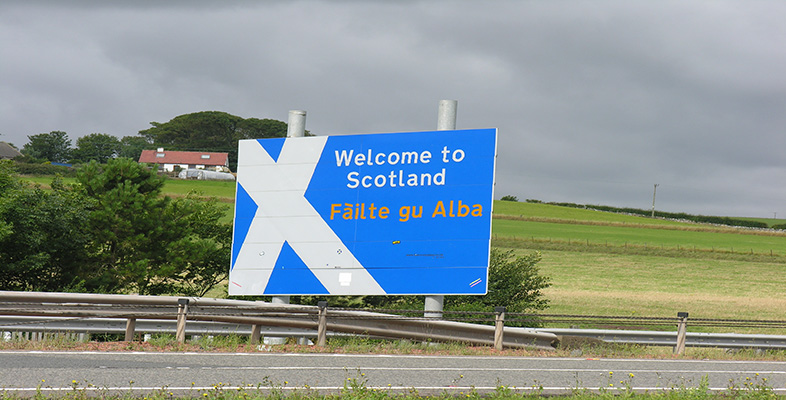1.6 Education
Any natural growth that might have taken place within the Gaelic-speaking population continued to be stymied by emigration (voluntary and forced) from Gaelic communities and an education system that discouraged the language’s use. The Society in Scotland for the Propagation of Christian Knowledge11, established in 1709, played an important role in the education of young Gaels through the 18th and 19th Centuries. Initially, their attitude to the language was outwardly hostile and the speaking of Gaelic was banned even in the playground.
In 1750, the Society demanded of pupils ‘either in the School house or when playing about the doors thereof to speak Earse [Gaelic] on pain of being chastised and that the Schoolmasters appoint Censors to note down and report to the Schoolmaster such as transgress this rule’, but in 1766 they permitted the introduction of Gaelic reading in order to improve English reading among Gaelic-speaking children. And in 1825, still with their eye on improving English fluency, they recommended that Gaelic-speaking children ‘should instead of being taught first to read English as has been Universally practiced throughout the Highlands, be taught first to read Gaelic’.
However, when education was brought under the state’s control as a result of the 1872 Education (Scotland) Act, Gaelic was deliberately excluded. The view of Mr D Sime, Inspector of Schools for Ross, Caithness and Sutherland, is typical of establishment attitudes at the time. In 1878 he wrote, ‘I should regard the teaching of Gaelic in schools in any shape or form as a most serious misfortune.’
Later acts, while recognising the right of Gaelic to be taught as a subject in certain schools, failed to reinstate any sort of bilingual education. Gaelic was to be treated as entirely peripheral and, in the bulk of the Scottish education system, that remains its circumstance today.
The result has been a further lowering of the language’s status, a general ignorance among the populus that Gaelic was a founding language of the nation and was once spoken over most of its landmass, and the inability of the majority of Scots to read the map of Scotland, more than half of which is covered with Gaelic place names.
Along with continued economic hardship and depopulation in the Highlands and Islands, lack of Gaelic-medium education at school resulted in a dramatic fall in speaker numbers to under a 100 000 in the latter part of the 20th century. As a linguistic and cultural minority in a country increasingly dominated by English, the world’s most powerful language for communication, science and commerce, the Gaels have felt beleaguered and, at times, unappreciated by many fellow Scots. A large number of them finally fell prey to the orthodoxy that Gaelic was a hindrance to progress, and stopped speaking the language to their children.
But many within Gaeldom, and their supporters throughout Scotland and the wider world, have never abandoned their philosophical stance that Gaelic was not just a minority tongue belonging to their own community (and worthy, on that basis, of a valued place in a just society), but that it was also a national language of Scotland. Gaelic’s claim upon, and contribution to, the national life, culture and identity of Scotland was recognised by the Scottish Parliament in 2005 when the Gaelic Language (Scotland) Act12 was passed with all-party support. The act declared that Gaelic had national status as ‘an official language of Scotland commanding equal respect to the English language’.
While it is the devolved Scottish Parliament that has taken prime responsibility for the development of the language, recent political developments also have a UK and European context. The UK is a signatory to the European Charter for Regional or Minority Languages, which obliges it to counter any measures which would ‘endanger the maintenance or development’ of Gaelic in Scotland. Gaels are increasingly appreciating that they are one of many minority language groups on a multilingual continent, in which a large percentage of the populace speak two or more languages. As the intellectual, social and cultural advantages of multilingualism become more widely understood in Scottish society, it is likely that Gaelic will become steadily more attractive to people from a wide array of cultural backgrounds.
